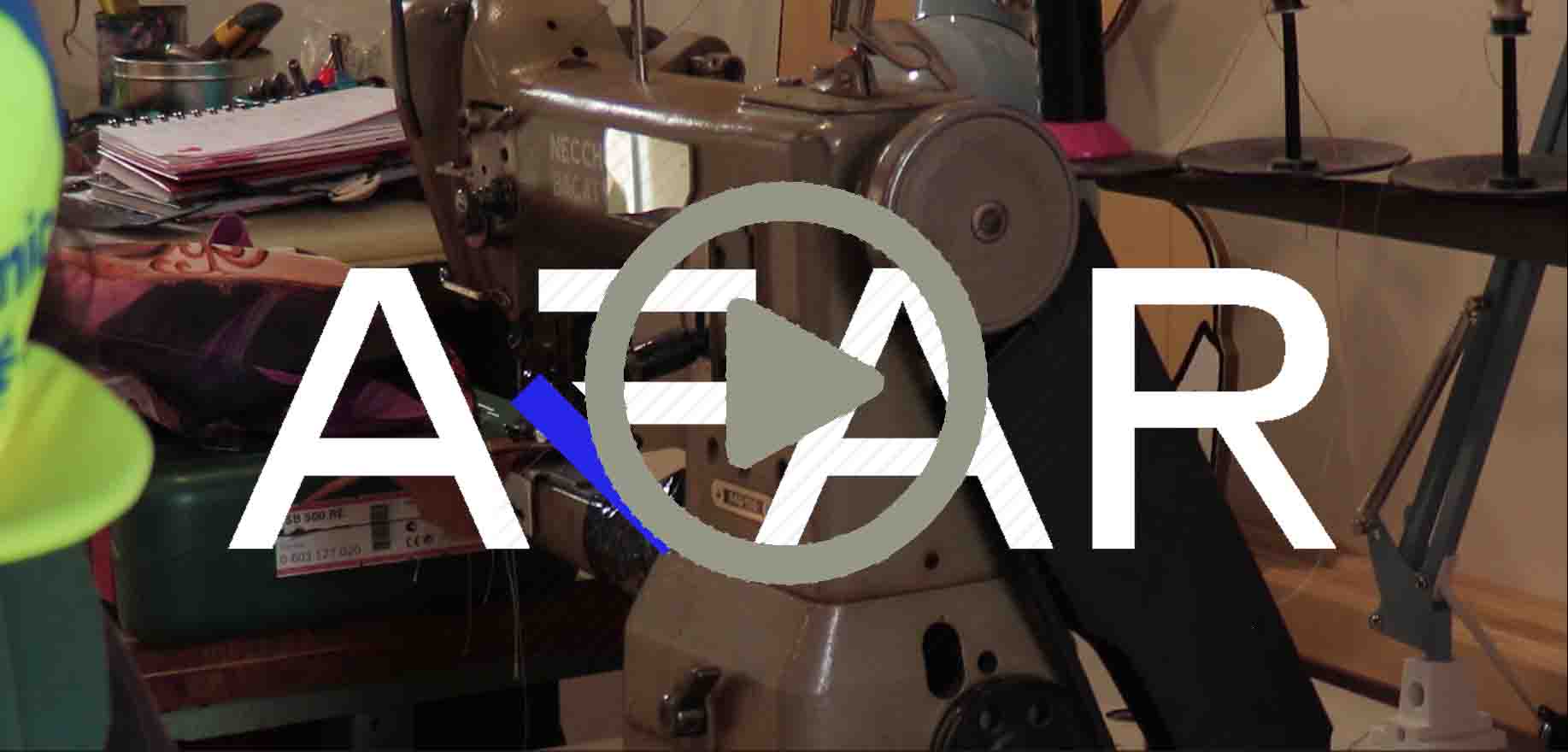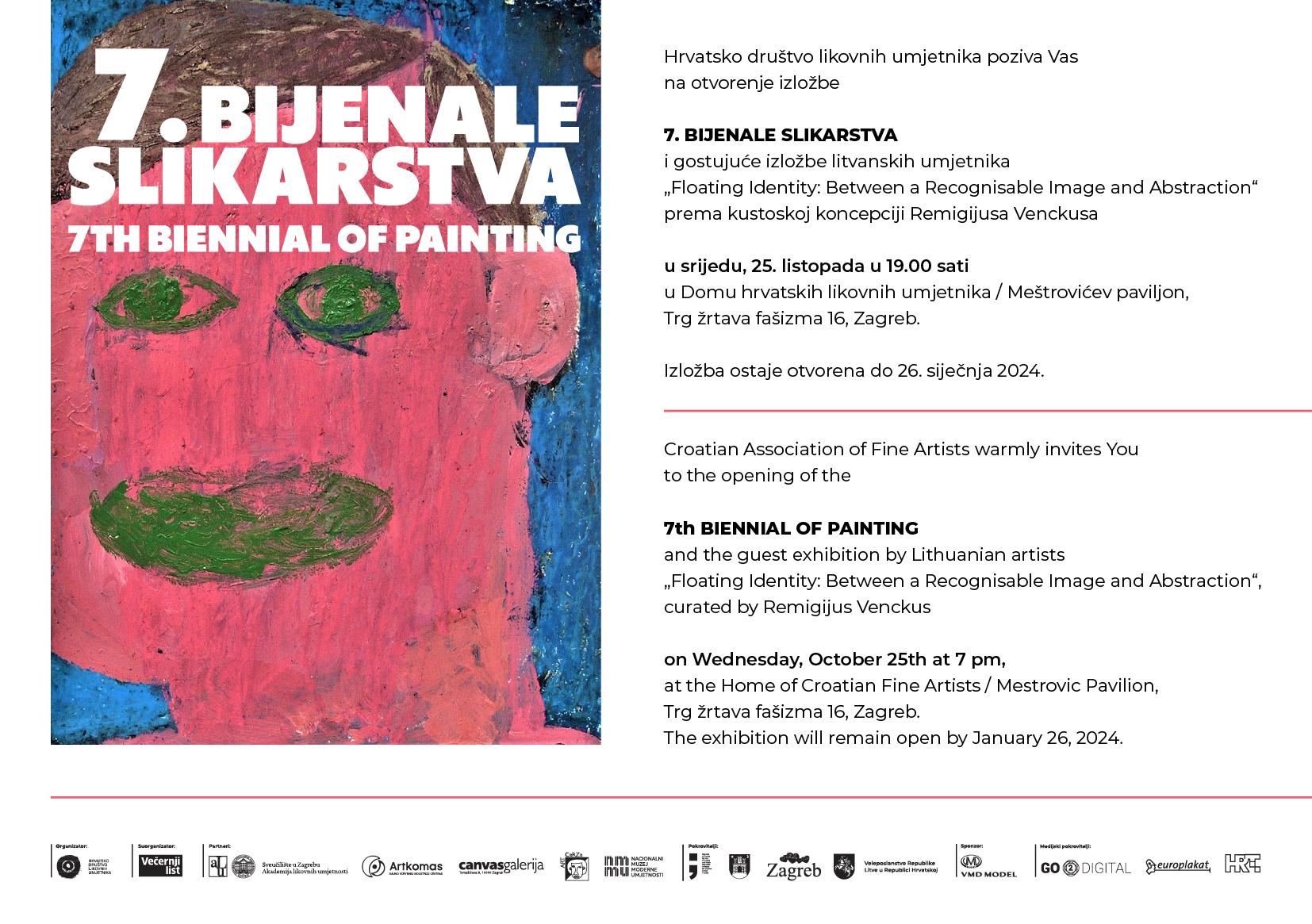Category: Events
We bring you photos from yesterday’s talk between Eve Woods (IE) and Luja Šimunović (HR): AFAR talk – A Selection of Irish Eco-artists, as part of the European project Artists for Artists Residency Network (AFAR), which aims to improve the mobility of contemporary visual artists and curators, creating greater opportunities for women in art, and takes place in four European partner countries – Romania, Germany, Croatia and Austria. The talk took place in cooperation with the Academy of Fine Arts in Zagreb, and as part of the course Introduction to the Theory of Art, by the associate professor Ph.D. Josip Zanki.


Eve Woods, the first resident curator in Zagreb, shared an overview of programming from Pallas Projects (Dublin) with a focus on environmental artists and presentations including special commission Ark Life and select artists from the annual gallery programme Artist-Initiated Projects and Periodical Review. After the introductory lecture, there was a conversation with Luja Šimunović, an assistant at the Department of Art History of the Faculty of Humanities and Social Sciences, University of Zagreb, followed by questions from the audience.
Within the project:
![]()
Project partners:

Co-funded by:
![]()


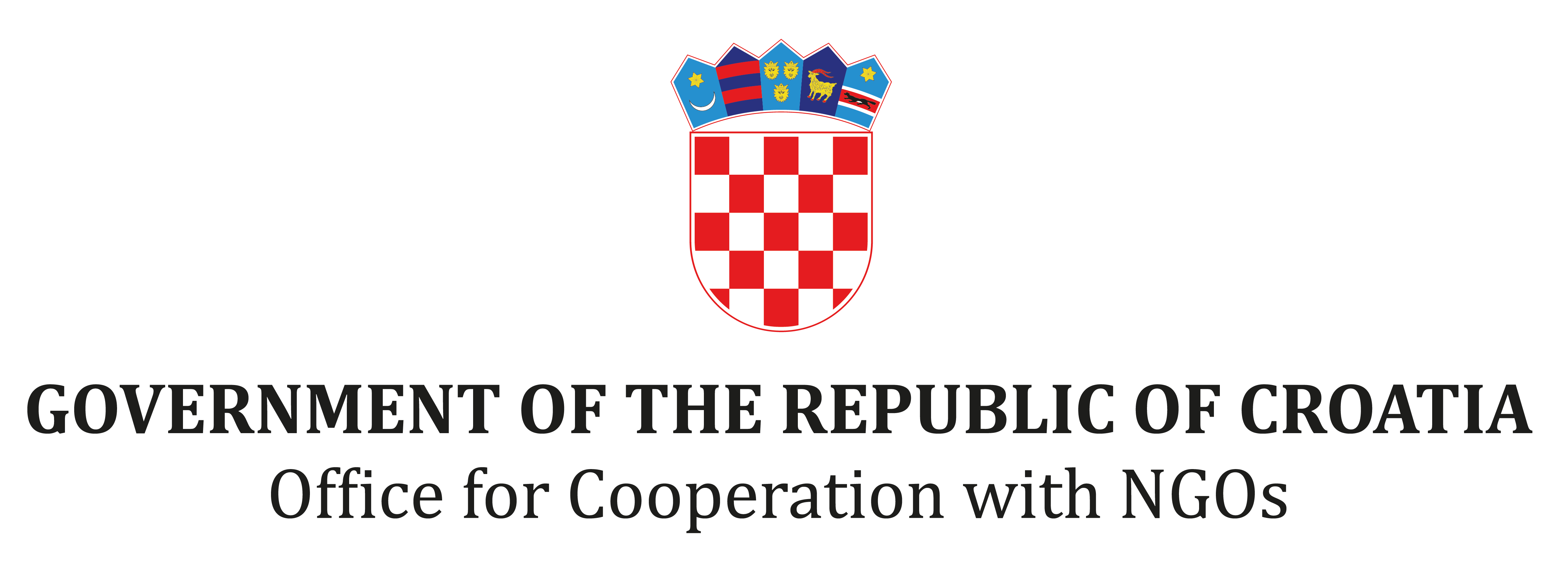
Co-funded by the European Union – CREA-CULT-2022-COOP. The views and opinions expressed are solely those of the authors and do not necessarily reflect the official views of the European Union or the European Education and Culture Executive Agency (EACEA). Neither the European Union nor the European Commission can be held responsible for them. [Project number: 101100309 ]
Project is co-financed by the Government Office for Cooperation with NGOs.
The views expressed in this announcement are the sole responsibility of HDLU and do not necessarily reflect the opinion of the Government Office for Cooperation with NGOs.
AFAR TALK: A SELECTION OF IRISH ECO-ARTISTS
Talk: Eve Woods and Luja Šimunović
in cooperation with the Academy of Fine Arts in Zagreb, as part of the course Introduction to the Theory of Art, by associate professor Josip Zanki, Ph.D.
January 15, 2024, 7 pm
AKADEMIJA LIKOVNIH UMJETNOSTI
Ul. Rudolfa Kolaka 12

Artists for Artists Residency Network (AFAR), a two-year project (2023-2024), aims to improve the mobility of contemporary visual artists and curators, while creating greater opportunities for women in the arts. The project takes place in four European partner countries – Romania, Germany, Croatia and Austria. The project focuses on the development of new international exchanges and transcultural dialogue and provides a number of new opportunities for art practitioners of all ages, in different artistic media, with a special emphasis on women in art and gender equality.
The project includes: 12 artist residencies in Zagreb (HR), Mulhouse (FR), Bucharest (RO) and in Săcel, Maramureș (RO), 4 curatorial residencies in Zagreb and Bucharest, 12 conferences in Zagreb, Bucharest and Vienna and 1 traveling international exhibition , which will first be shown to the public in Zagreb (HR), and then in Vienna (AT) and Bucharest (RO).
Eve Woods, the first resident curator in Zagreb, will share an overview of programming from Pallas Projects (Dublin) with a focus on environmental artists and presentations including special commission Ark Life and select artists from the annual gallery programme Artist-Initiated Projects and Periodical Review. Presented artists often work through a feminist, anti-aesthetic.
After the introductory lecture, there will be a talk with Luja Šimunović, an assistant at the Department of Art History of the Faculty of Humanities and Social Sciences, University of Zagreb.
Eve Woods is Curator/Programme Producer at Pallas Projects where she has worked in various roles since 2016. She has led on the Artist-Initiated Projects since 2019, and special projects including; curating ‘Dubliners Reel’ at the 6th Biennial of Painting, Zagreb 2021; Ark Life workshop programme & exhibition with artist Celina Muldoon funded by the Arts Council Commission Award 2021; Irish Art Now: Contemporary Art Auction in support of PP/S 2019; Nasty Women Dublin 2017; & PP/S 20 Year Benefit Auction 2016. She has also worked as Visiting Lecturer – Strategies for publicising cultural events – Dun Laoghaire Institute Of Art Design + Technology, 2021; Producer at Science Gallery Dublin (SGD) where she represented SGD at EXPERIMENTA, la Biennale Arts Sciences 2020 as part of the European Artificial Intelligence Lab; and Green on Red Gallery Dublin where she assisted at international art fairs including VOLTA NY, 2017. Education includes Situations: Art in the Contemporary World, Creative Futures Academy, 2022; Expanding Exhibitions: Innovative Approaches to Curating, Node Center 2021; Sponsorship Seminar, Business To Arts, 2016; BSc. Digital Technology & Design 1:1, Dublin Institute of Technology/Digital Skills Academy 2016; MA. in Visual Arts Practices, Dun Laoghaire Institute of Art, Design & Technology, 2014; BA. (Hons) in Fine Art (Painting) 2:1, Centre for Creative Arts & Media, Galway, 2012.
Luja Šimunović graduated art history and comparative literature at the Faculty of Humanities and Social Sciences University of Zagreb. She works as an independent curator and assistant at the Department of Art History of the Faculty of Humanities and Social Sciences University of Zagreb. As an independent curator, she has been active on the cultural scene since 2015, when she works in an organization dedicated to the intersection of science and art, KONTEJNER, where she works as a curator and project manager of artistic and educational programs until 2021. She is the editor of a publication that explores the theoretical and practical implications of collecting, digitizing and archiving bio-art, published in 2022 on the occasion of the European Archive project. From 2016, she was part of the Organ Vida team, where she worked as an exhibition coordinator and curator, until 2019, when she became part of the curatorial collective of organizations and festivals until 2021. She founded the independent organization and curatorial collective KUĆĆA in 2021 with Jurica Mlinarec and Klara Petrović. With the collective, he curates the 36th youth salon (HDLU, 2022) on the theme PARASITES, the 63rd Poreč annals entitled “They told me that the planet has nerve endings” and leads the experimental residential project LIVING ROOM. She is the winner of the Special Rector’s Award for participation in the Wikipedia project, the Franjo Marković Award of the Faculty of Humanities and Social Sciences for founding the cultural portal Kulturflux, and the Iso Kršnjavi Award for the best graduation thesis from the Department of Art History. She collaborated with cultural portals (Vizkultura, Muf), and was published in INSAM Journal, Croatian Film Chronicle and &&&Journal.
Within the project:
![]()
Project partners:

Co-funded by:
![]()



Co-funded by the European Union – CREA-CULT-2022-COOP. The views and opinions expressed are solely those of the authors and do not necessarily reflect the official views of the European Union or the European Education and Culture Executive Agency (EACEA). Neither the European Union nor the European Commission can be held responsible for them. [Project number: 101100309 ]
Project is co-financed by the Government Office for Cooperation with NGOs.
The views expressed in this announcement are the sole responsibility of HDLU and do not necessarily reflect the opinion of the Government Office for Cooperation with NGOs.
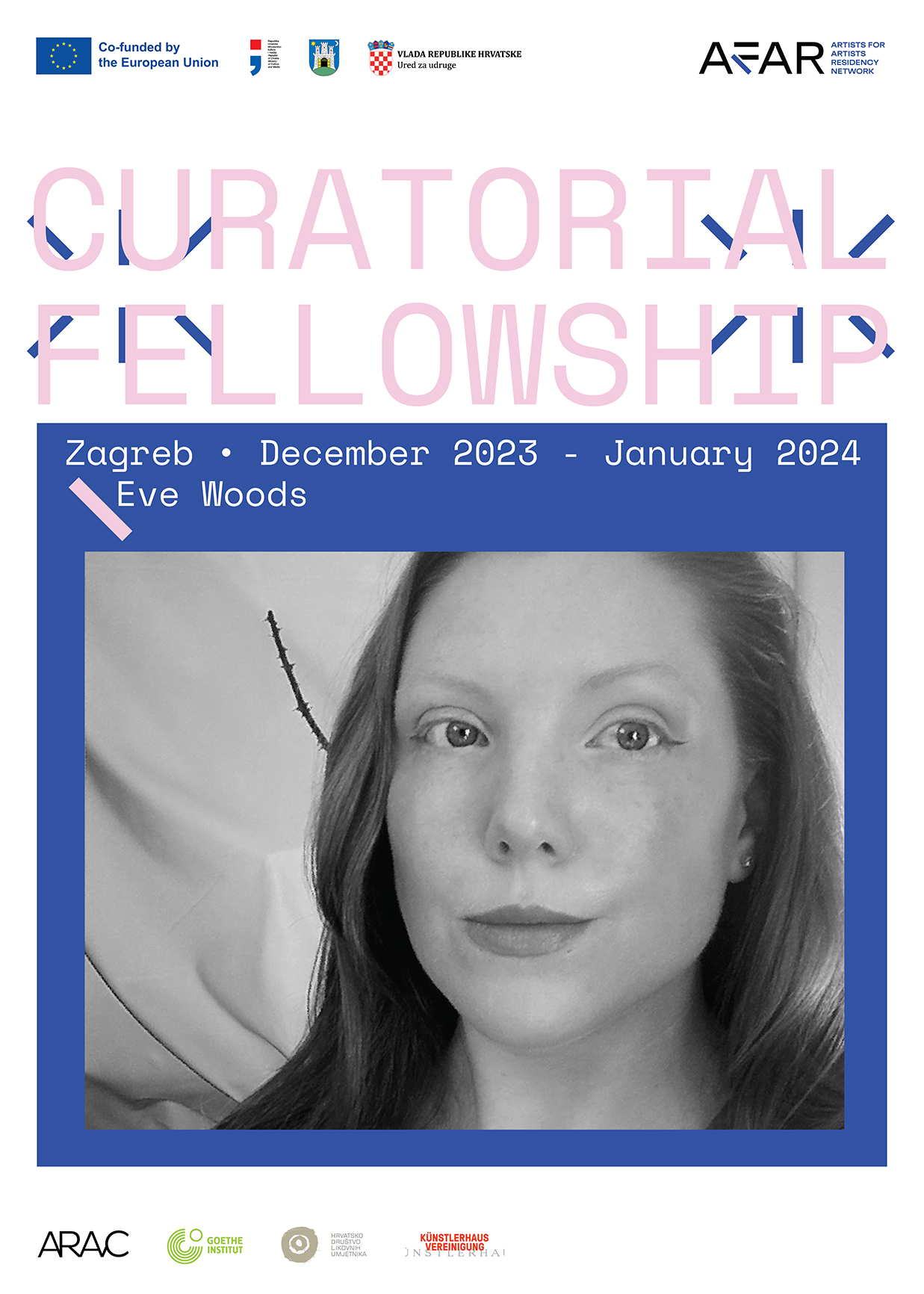
The Artists for Artists Residency Network, a two-year project (2023-2024), aims to improve the mobility of contemporary visual artists and curators, while creating greater opportunities for women in the arts. The project takes place in four European partner countries – Romania, Germany, Croatia and Austria. The project focuses on the development of new international exchanges and transcultural dialogue and provides a number of new opportunities for art practitioners of all ages, in different artistic media, with a special emphasis on women in art and gender equality. The result of the project will be increased awareness of the importance of cultural mobility at local legislative levels, but also in the general public, especially in the current (post)crisis European context, strengthening EU affiliation and connection with contemporary visual art.
The project includes: 12 artist residencies in Zagreb (HR), Mulhouse (FR), Bucharest (RO) and in Săcel, Maramureș (RO), 4 curatorial residencies in Zagreb and Bucharest, 12 conferences in Zagreb, Bucharest and Vienna and 1 traveling international exhibition , which will first be shown to the public in Zagreb (HR), and then in Vienna (AT) and Bucharest (RO).
The first resident of the AFAR project is Eve Woods, curator and producer of the Pallas Project in Dublin, who also works as a visual artist.
She has led on the Artist-Initiated Projects since 2019, and special projects including; curating ‘Dubliners Reel’ at the 6th Biennial of Painting, Zagreb 2021; Ark Life workshop programme & exhibition with artist Celina Muldoon funded by the Arts Council Commission Award 2021; Irish Art Now: Contemporary Art Auction in support of PP/S 2019; Nasty Women Dublin 2017; & PP/S 20 Year Benefit Auction 2016.
She has also worked as Visiting Lecturer – Strategies for publicising cultural events – Dun Laoghaire Institute Of Art Design + Technology, 2021; Producer at Science Gallery Dublin
(SGD) where she represented SGD at EXPERIMENTA, la Biennale Arts Sciences 2020 as part of the European Artificial Intelligence Lab; and Green on Red Gallery Dublin where she assisted at international art fairs including VOLTA NY, 2017.
Eve Woods’ practice is concerned with the deep structure of social phenomena. This practice is focused especially in relation to femality, anxiety (as a society) and the internet. Overarching themes of information; it’s perversion and uses in a hyper-connected world, animalism and ethics bleed through these overlapping spheres of interest. Important to these thought patterns and especially evident in the aesthetics of the work is the focus on ideas of myth, urban legend and pseudoscience.
As part of the residency, Eve Woods gets to know the Croatian art scene with the aim of international connections and inviting Croatian artists to Ireland, and the residency will include visits to studios and exhibitions and her lecture at the Academy of Fine Arts in Zagreb on January 15 at 7 p.m. As part of the lecture, a conversation with Luja Šimunović, an assistant from the Department of Art History, The Faculty of Humanities and Social Sciences, University of Zagreb, who has been active on the cultural scene as an independent curator since 2015, is planned.
The project takes place in four European partner countries – Romania, Germany, Croatia and Austria. The consortium consists of the project leader (ARAC) – Bucharest, Romania and 3 partners: Goethe Institute network, Croatian Association of Fine Artists – Zagreb, Croatia and Künstlerhaus – Vienna, Austria. An additional associated strategic partner of the project is La Kunsthalle Mulhouse which is also the Center d’Art Contemporain d’Intérêt National de la Ville de Mulhouse, located in a former industrial building it shares with the University of Haute-Alsace, the city archives and the Ateliers Pédagogiques d’Arts Plastiques.
Within the project:
![]()
Project partners:

Co-funded by:
![]()



Co-funded by the European Union – CREA-CULT-2022-COOP. The views and opinions expressed are solely those of the authors and do not necessarily reflect the official views of the European Union or the European Education and Culture Executive Agency (EACEA). Neither the European Union nor the European Commission can be held responsible for them. [Project number: 101100309 ]
Project is co-financed by the Government Office for Cooperation with NGOs.
The views expressed in this announcement are the sole responsibility of HDLU and do not necessarily reflect the opinion of the Government Office for Cooperation with NGOs.

We are pleased to announce that the Croatian Association of Fine Artists is once again part of the CreArt network – a European project that continues the earlier CreArt 1.0 and 2.0. – the European network of cities and private and public institutions, which started in 2012 with the aim of responding to the needs of European cultural institutions, which includes increasing the economic, social and cultural impact of the visual arts by providing better support to artists, managers in culture, industry and the general public.
The European Commission once again recognized the importance of this project and supported the new three-year chapter CreArt 3.0 (#CreArt3) with 1.9 million euros, and the first activities will begin in January 2024.
CreArt is a network of 13 medium-sized European cities with the aim of exchanging experiences and good practices for the promotion of contemporary art, through a permanent transnational mobility program for emerging artists, curators and cultural workers, in order to maximize the economic, social and cultural contribution that creativity can make to local communities (#stringing_together). At the same time, CreArt 3.0 is pushing the boundaries (#pushboundaries) beyond the visual arts, empowering other artistic practices such as performing arts or music, and new collaborations with an NGO based in Lviv have also been initiated to support Ukrainian artists.
The direct beneficiaries of the project are based in communities from East to West Europe & from North to South, including: Ayuntamiento de Valladolid (Spain), Skopje (North Macedonia), Comune di Venezia and Fondazione Bevilacqua La Masa (Italy), Kauno kūrybinių industrijų centras (Lithuania), Ville de Clermont-Ferrand (France), Vil
The project includes 45 residency programs in 15 European cities, more than 39 public events to celebrate the European Month of Creativity in 13 cities from the network, 13 educational programs to strengthen creativity and knowledge about contemporary art, 18 Street Art festivals, 10 annual festivals in galleries in 9 cities and 6 European conferences and study visits.
The Croatian Association of Fine Artists (HDLU), as part of the CreArt 3.0 project, will every year:
- carry out educational programs for school-age children within the framework of their art manifestations like the Biennial of Painting and the Zagreb Salon
- bring contemporary art to business premises through the Takeover program
- organize local seminars to strengthen the professional knowledge of artists,
- through the Karas + Kvart program, try to redefine and create a new cultural identity of the neighborhood where the Karas Gallery is located, with the participation of Croatians and artists from the network of cities
- implement the residency program De/construction of painting for Croatians and artists from the network in Leipzig
The value of HDLU’s engagement in the CreArt 3.0 project is EUR 229,940.00, of which EUR 137,964.00 is secured from EU funds.
Within the project:
![]()
Partners:
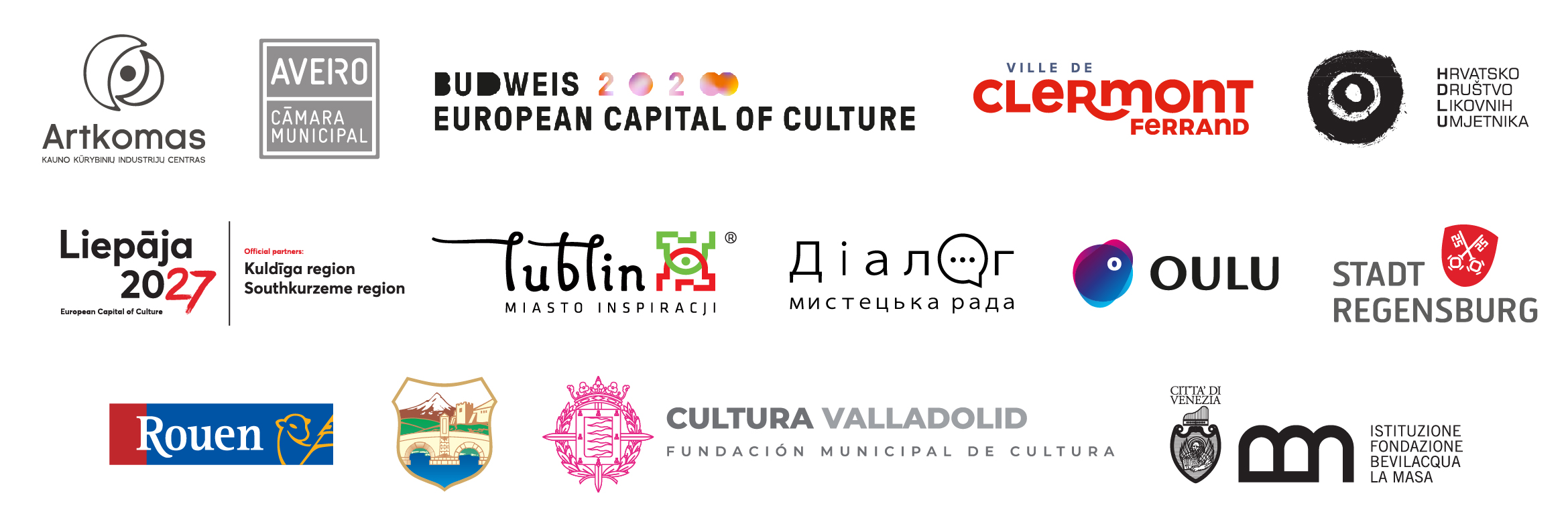
Co-funded by:
![]()



Co-funded by the European Union – CREA-CULT-2023-COOP. The views and opinions expressed are solely those of the authors and do not necessarily reflect the official views of the European Union or the European Education and Culture Executive Agency (EACEA). Neither the European Union nor the European Commission can be held responsible for them. [Project number: 101128499]
Project is co-financed by the Government Office for Cooperation with NGOs.
The views expressed in this announcement are the sole responsibility of HDLU and do not necessarily reflect the opinion of the Government Office for Cooperation with NGOs.
This December, first residency of the AFAR project (the goal of which is to improve the mobility of contemporary visual artists) begins, and 5 guest residencies are planned for the next year. Some of them will include workshops with artist Nikolina Knežević Hrgović, while artist Željko Beljan will participate in a residency in Romania.
The focus is on the development of new international exchanges and transcultural dialogue. The AFAR project provides a range of new opportunities for art practitioners of all ages, in various artistic media, with a particular focus on supporting women in the arts and promoting gender equality.
The project takes place in four European partner countries – Romania, Germany, Croatia and Austria.
Video: Marta Dijak
Narration: Astrid Jakšić
Within the project:
![]()
Project partners:

Co-funded by:
![]()



Co-funded by the European Union – CREA-CULT-2022-COOP. The views and opinions expressed are solely those of the authors and do not necessarily reflect the official views of the European Union or the European Education and Culture Executive Agency (EACEA). Neither the European Union nor the European Commission can be held responsible for them. [Project number: 101100309 ]
Project is co-financed by the Government Office for Cooperation with NGOs.
The views expressed in this announcement are the sole responsibility of HDLU and do not necessarily reflect the opinion of the Government Office for Cooperation with NGOs.

The seventh edition of this nationally important event, the Biennial of Painting and the guest exhibition of Lithuanian artists will open its doors at the Home of Croatian Association of Fine Artists, the renowned Meštrović Pavilion at 19:00 on 25 October 2023.
The Biennial of Painting presents a broad cross-section of generations actively shaping the Croatian painting scene, with the aim of documenting the current biennial production. Traditionally, the Biennial of Painting has also hosted an exhibition of foreign artists, which, following the concept of a guest curator, presents a cross-section of the painting scene of a European city (2011/Berlin, 2013/Vienna, 2015/Gdansk, 2017/Prague, 2019/Leipzig, 2021/Dublin). This year’s Biennial juxtaposes the Croatian painting scene with the Lithuanian painting scene through the exhibition titled Floating Identity: Between a Recognizable Image and Abstraction, curated by Remigijus Venckus.

Recognizing the need for broader representation and advocacy of artistic endeavours within the medium of painting, this year’s Biennial extends beyond the Meštrović Pavilion, with a portion of the program taking place at three additional venues. At the Vranyczany Palace on Berislavićeva Street (home to the Croatian History Museum), in collaboration with the Academy of Fine Arts in Zagreb, the exhibition ‘ALuZija’ will be presented, featuring a selection of paintings of the final-year students and alumni of the Academy of Fine Arts in Zagreb. At the Canvas Gallery, the exhibition titled Flower Market / Tržnica cvijeća will be on display, a solo exhibition by Matko Vekić, the Grand Prix winner of the 6th Painting Biennial. Meanwhile, the inclusive art gallery, Art&CeRZe, will present an exhibition featuring professional artists and users from the Zagreb Rehabilitation Centre.
More than 100 artists will be showcased within the main selection and additional exhibition programs.
Visitors, besides enjoying the exhibitions, can participate in numerous educational, inclusive and discursive activities. Highlights include guided tours of murals in public spaces (VMD Park kneževa, Zagreb University Hospital Centre — Rebro), guided tours for adults, guided tours for children and young people accompanied by educational booklets, art workshops for all ages, artists meet and greet in their studios, and inclusive art workshops.
In January 2024, prizes funded by private donors will be granted for the most outstanding achievements as part of the Biennial. The official competition will award a Grand Prix worth EUR 4,500.00 gross, and a prize for a young artist valued at EUR 3,000.00 gross. Thanks to an anonymous philanthropist, an out-of-competition award, the Kontrapunkt Award Vladimir Dodig Trokut_Iva Vraneković, Artists to Artist, will also be awarded in the amount of EUR 2,222.00 net.

MAIN EXHIBITION PROGRAM:
7th Biennial of Painting
25 October 2023 – 26 January 2024
Home of the Croatian Association of Fine Artists/Meštrović Pavilion, Trg žrtava fašizma 16
Ring Gallery, PM Gallery
The jury of the 7th Biennial of Painting, consisting of Tomislav Buntak, Fedor Fischer, Koraljka Kovač, Željko Marciuš, Martina Miholić, Josip Zanki, selected 42 artists based on the competition and invited 6 artists.
Guest Exhibition of Lithuanian Artists
Floating Identity: Between a Recognisable Image and Abstraction
Curated by Prof. Remigijus Venckus, Ph.D.
25 October 2023 – 26 January 2024
Home of the Croatian Association of Fine Artists/Meštrović Pavilion, Trg žrtava fašizma 16
Bačva Gallery
ADDITIONAL EXHIBITION PROGRAMS
Matko Vekić: ‘Flower Market / Tržnica cvijeća’
10 – 17 November 2023
Opening on 10 November 2023 at 19.00
Canvas Gallery
Exhibition of students of the Academy of Fine Arts: ‘ALUsion’
08 November 2023 – 14 January 2024
Opening on 08 November 2023 at 19:00
Vranyczany Palace (Croatian History Museum), Berislavićeva 6
Organized by: Academy of Fine Arts Zagreb
ART4ALL, Exhibition of Professional Artists and Users of the Zagreb Rehabilitation Centre, and the Opening of the Inclusive Art Gallery ‘Art&CeRZe’
21 November 2023 – 22 December 2023
Opening on 21 November 2023 at 18:00 h
Art&CeRZe Gallery, Kneza Mislava Street 11
Organized by: Zagreb Rehabilitation Center


